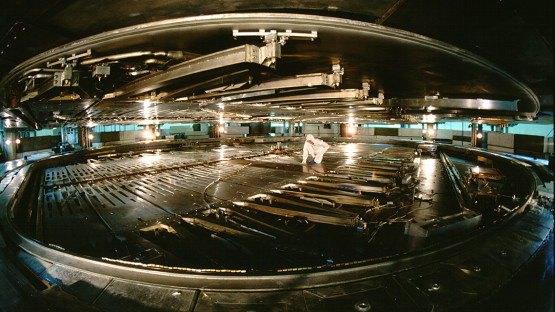Cyclotron – it sounds like a character from a science fiction film. It’s actually a particle accelerator, a machine that uses electromagnetic fields to propel charged particles to very high speeds and energies, used to produce radioisotopes for a type of medical drugs called radiopharmaceuticals, which diagnose and treat cancer. There are over 1500 cyclotron facilities around the world, and the IAEA has recently updated its interactive map and database featuring 1300 of these cyclotron facilities from 95 countries.
First published in 2019, the Database of Cyclotrons for Radionuclide Production is a tool to help experts such as radiopharmacists and owners and users of medical cyclotron facilities to find and exchange technical, utilization-related and administrative information on operating cyclotrons. It forms part of the IAEA’s commitment to enhancing countries’ capabilities in producing radioisotopes and applying radiation technology in health care.
“Cyclotrons are developing rapidly and will play an increasingly important role in the health care sector, especially in advanced medical imaging procedures, because cyclotron-produced radiopharmaceuticals are very efficient in detecting various cancers,” said Amir Jalilian, Radioisotope and Radiopharmaceutical Chemist at the IAEA.
Medical imaging techniques such as positron emission tomography (PET) and single photon emission computed tomography (SPECT) rely on cyclotron-produced radioisotopes. Unlike research reactors – which also produce radioisotopes – cyclotrons do not use nuclear materials and are not subject to the same radiological safety and security considerations as reactors.
The IAEA database enables users to search for details about each facility, including type, size and number of cyclotrons. Professionals in the field can connect and share expertise and information on their radiopharmaceutical products. The platform also features upcoming IAEA events and publications on the installation and application of cyclotrons.
The database forms part of the IAEA’s work supporting countries in radionuclide production. The IAEA provides expert advice and technical guidance related to radiopharmaceutical production facilities; develops human resource capabilities through training courses and education programmes and promotes research and development through coordinated research projects.
Owners and users of medical cyclotrons can contact the IAEA Division of Physical and Chemical Sciences to send up-to-date information on their facilities by filling out a form and submitting it online.
For more information, visit the Database of Cyclotrons for Radionuclide Production. To find out more about accelerators and their applications, visit the IAEA Accelerator Knowledge Portal (AKP).






